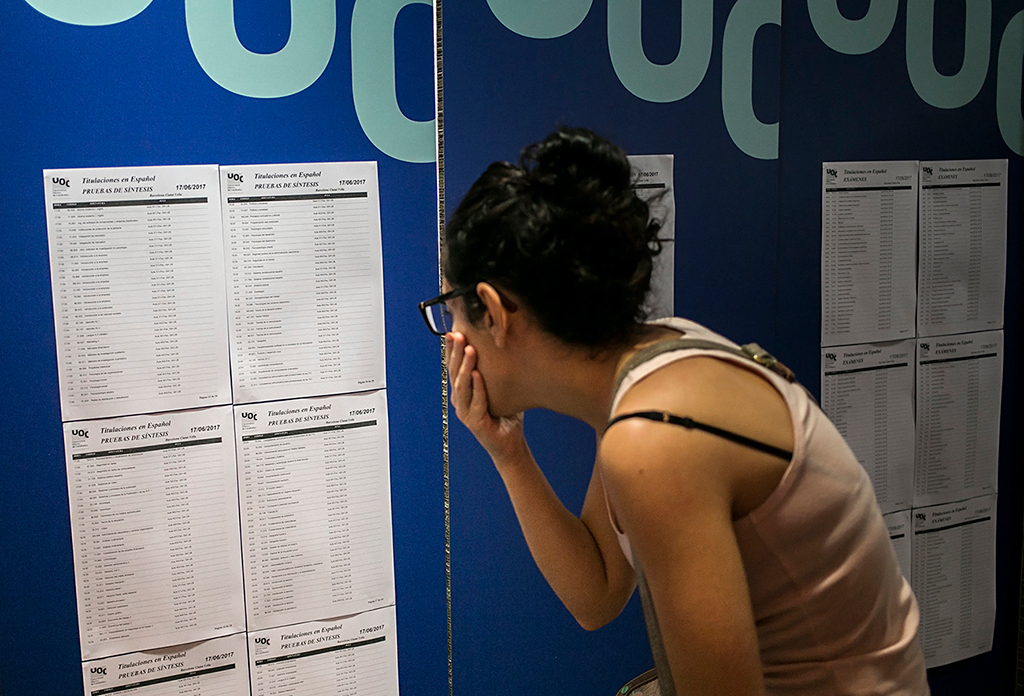Can the rankings really help you choose a university?
The experts warn that the classifications are intended for traditional universities
The fact that each ranking, out of the dozens that appear each year, gives a different university as the best one in the country may generate confusion among students. Each ranking rates different items, often in traditional terms, and this changes the centres' position in each classification. But exactly how should a ranking be read? How much importance should you give to it as a student?
"A ranking tries to order a group of universities according to their supposed quality. Why is this ordering necessary? To help governments, students and their families or investors make decisions", suggests Nati Cabrera, professor at the UOC Faculty of Psychology and Education Sciences and member of the Edul@b research group, adding that the rankings have become so popular that they have a palpable influence on economically very important decisions.
Given this situation, the experts say that their "positive aspects" should not be underrated, but neither should their "serious shortcomings". As Cabrera explains, the first step in producing a ranking is a prior assessment of the universities' quality and here is where "the problems start". "It isn't easy to define what a quality university is, particularly when we are dealing with a very diverse range of universities, even within the same country", the professor says.
She adds that the first rankings were published in the United States at the start of the 20th century. It is important to remember this, because most of them conceive quality in terms of the institution's standing and social perception. This in turn conditions what is assessed in the rankings and how the assessment is made.
She also points to the importance of taking into account the role that certain very respected international newspapers and magazines, each one with its particular economic interests, have played historically, and still do play, in the publication of rankings. This list includes names such as The Times, The Sunday Times or Maclean’s – a magazine that is published in Canada. "Initially, most of today's rankings combined objective indicators with subjective appraisals of aspects such as the faculty, the library or the budget." "But nowadays, the items assessed have expanded a bit", she adds. This means that each institution's position in the ranking depends on aspects such as financial resources, the donations it receives, its human resources (faculty quality: publications, citations, Nobel laureates, etc), the students, the selection process, the re-enrolment rate (the opposite of the dropout rate) and the graduate rates. The professor asserts that some rankings have even included aspects related with the teaching as such, such as the teacher-student ratio. "Perceived standing usually accounts for 25% of the total weight of all the items that are assessed, although nowadays it is not just the standing among academics that is rated but also its standing among graduates, employers and business people in general", Cabrera points out.
Designed to "measure orthodoxy"
Lluís Pastor, director of the UOC eLearn Center, thinks that rankings are designed to "measure orthodoxy". "For many centuries, the university has been based on the same model: a person who instructs a group, using a single model consisting of classes and libraries", says Pastor, who adds that the rankings are provided to "answer questions about standard universities". According to the eLearn Center's director, the emergence of the information society has given rise to the creation of "unique universities", and these are not well catered for in this type of ranking, because "they do not fit the traditional university model".
This is why Pastor believes that the new universities are not adequately assessed in the rankings. "If you have a system for measuring mammals but you analyse an octopus, it's obvious that the octopus is not going to get a good rating", the expert argues. Asked whether one should take notice of the rankings when choosing a university to study at, Pastor thinks that they are "one more piece of information among others". He recommends checking out other indicators. "The best ranking is to ask former students where they have learned most and where they have been happiest", he advises, and he also thinks that prospective students should look at the universities' employability rate.
Which are the important rankings?
Although the experts warn that they are incomplete rankings, the most widely acknowledged are the Shanghai ranking, called Academic Ranking of World Universities, the Times Higher Education (THE) World University Rankings and the CHE University Ranking. "A ranking like the Shanghai ranking gives information about the institutions' perceived standing and, therefore, the perceived standing of their programmes. However, a good rating in these rankings does not necessarily correlate with aspects such as the educational model or student mentoring, which may be important factors in the choice of university", says Cabrera. However, she acknowledges that the new multidimensional rankings offer a picture of each university with many more dimensions and, in this respect, she thinks that they could be much more useful in considering the various options available when choosing a university.
Experts UOC
Press contact
-
Editorial department
